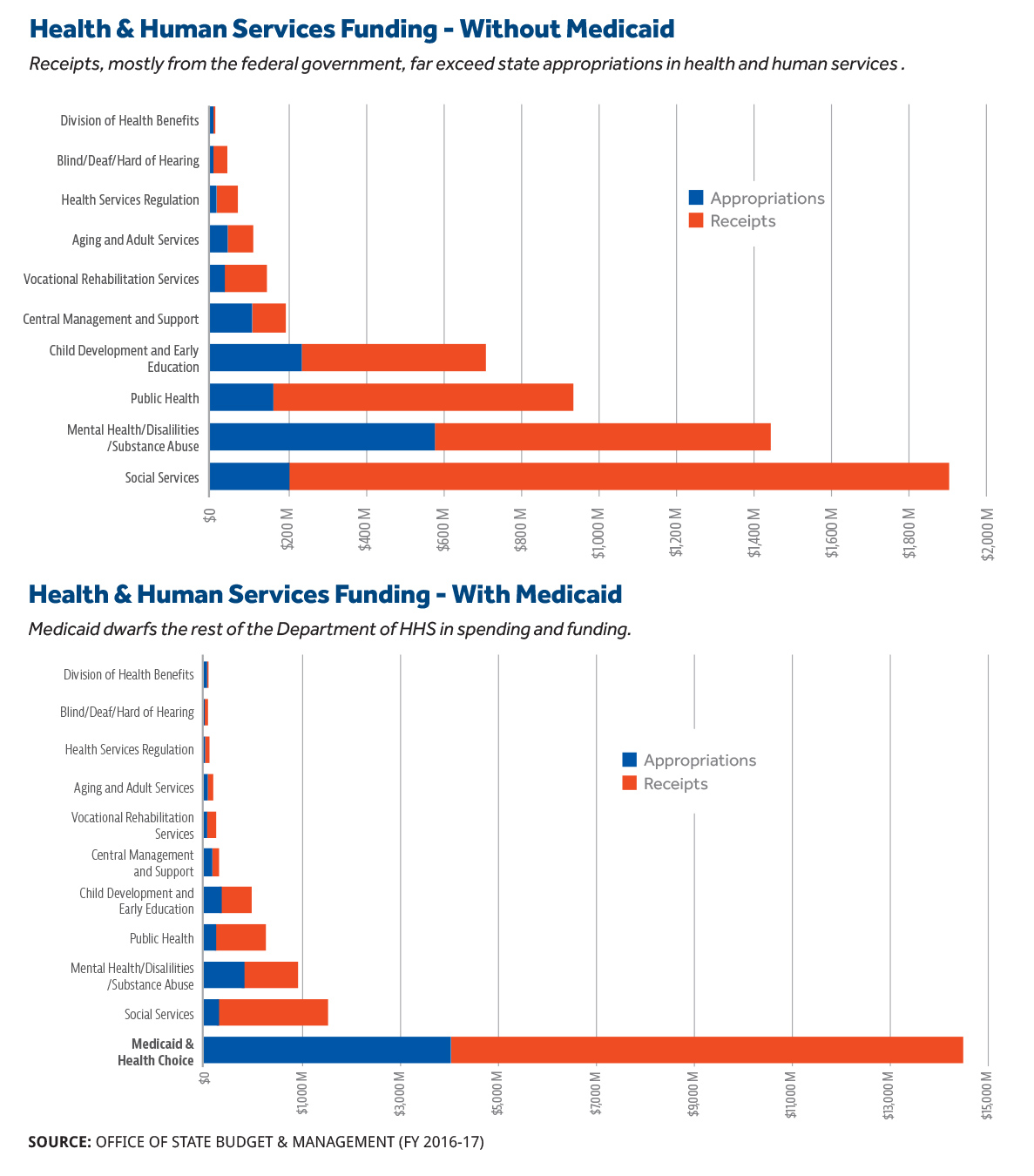Medicaid is the largest spending item of the roughly $53 billion flowing through state coffers this year, yet state policymakers have minimal control over the program.
Joseph Coletti, a senior fellow at the John Locke Foundation, noted the major role of Medicaid and other health and human services spending during a presentation Monday, March 12 presentation on North Carolina’s fiscal state. It was part of JLF’s weekly Shaftesbury Society meeting.
Coletti used a series of graphs and charts to explain the characteristics of the General Fund, other state revenues, and how money is appropriated each year.
Coletti’s work — based on data provided by the Office of State Budget and Management and the General Assembly’s Fiscal Research Division — soon will become an online guide at JLF’s website (johnlocke.org), which the public can use to make the detailed and often dense material easier to understand and simpler to track over time.

The total General Fund budget for fiscal 2017-18 is about $23 billion, an increase of roughly 2.5 percent over the past year. It’s the largest source of state funding. The State Highway Fund and State Highway Trust Fund generate a combined $3.7 billion. Adding federal tax dollars and other revenue sources, including college tuition and other grants, state spending totals roughly $53 billion annually.
The federal government funds two-thirds of North Carolina’s $14 billion Medicaid program, with $3.6 billion coming from state taxes.
By looking at the numbers, Coletti determined the state’s spending priorities are geared toward health, education, and welfare services. The majority of state funding goes to education with 57 percent of the General Fund, or $13 billion, allocated for K-12 education, community colleges, and the UNC system.
Of that 57 percent, K-12 education receives 39 percent of appropriated state funds. The UNC systems gets 13 percent, and the community college system gets only 5 percent.
“Flagship” campuses like the University of North Carolina-Chapel Hill and N.C. State University receive 40 percent or more of their funding from tuition, grants, and other unappropriated receipts. Meanwhile, lower-profile campuses, including Elizabeth City State University and the University of North Carolina-Asheville, rely more on state funding and have budgets of less than $100 million each.
While a significant amount of funding goes to education, the Medicaid program is the most expensive. Coletti said Medicaid is the item to watch in future budget discussions because it will probably change.
“For one it is the largest area of spending outside of education, and two it is a place where growth can happen,” Coletti explained. Many Medicaid programs are tied to federal regulations, leaving state policymakers with few options to spend money more efficiently unless Washington bureaucrats grant waivers.
Also, as Coletti noted, states seeking Medicaid flexibility typically have had to expand coverage to include more able-bodied, working adults, which would raise spending for the program even faster.
As the state continues to grow, spending has remained relatively in line with population and inflation. At the same time, the rainy day fund, which includes funds set aside if spending commitments exceed tax collections, has reached an all time high of nearly $2 billion. The rainy day fund has exceeded 8 percent of General Fund appropriations — a goal lawmakers set roughly a decade ago.